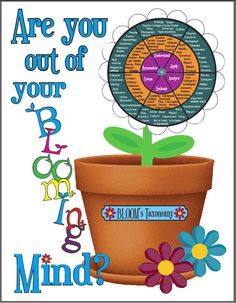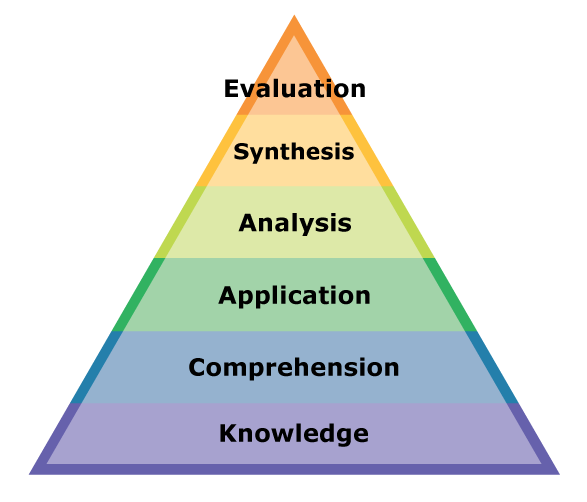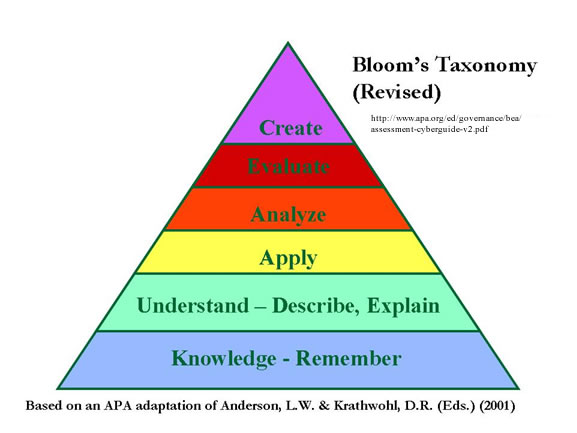A common challenge in college teaching is keeping course objectives, program outcomes and classroom assessments in alignment. As we construct our assessment instruments, course assignments, and test questions, are we also considering where on the cognitive ladder we are asking our students to think?
In 1956, Benjamin Bloom headed a group of educational psychologists who developed a classification of three domains: Cognitive: mental skills (Knowledge), Affective: growth in feelings or emotional areas (Attitude), Psychomotor: manual or physical skills (Skills).
Within this cognitive domain, Bloom identified six levels from the simple recall or recognition of facts at the bottom level through increasingly more complex and abstract mental levels to the highest order thinking characterized as evaluation. This representation of the levels of thinking is widely known in education circles as “Bloom’s Taxonomy.”
Figure 1 – Original version of Bloom’s Cognitive Taxonomy
Bloom found that over 95 % of the test questions students encountered in the classroom require them to think only at the lowest possible level…the recall of information. As educators we tend to ask questions in this, the “knowledge” category, about 80% to 90% of the time. However, course objectives are often written at higher levels of the taxonomy, like application or analysis. So testing basic knowledge or comprehension skills of students may not align with our stated course or program outcomes of enhancing problem solving.
Figure 2-A more recent version of Bloom’s Taxonomy
Revisiting Bloom’s Taxonomy can be enormously helpful for faculty who can use this framework to tie together course objectives, program outcomes, and classroom assessments. For more resources on this topic or support in applying these concepts to your assessment, please contact the Office of Outcomes Assessment.
Sheri H. Barrett, Ed.D.



